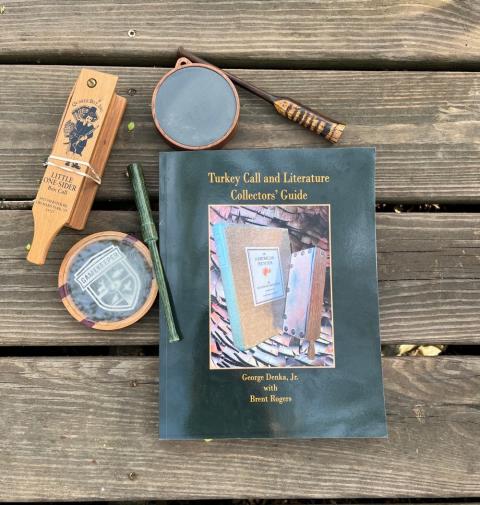By Bob Humphrey, Mark Kayser and Jake Meyer with excerpts from the GameKeepers Magazine
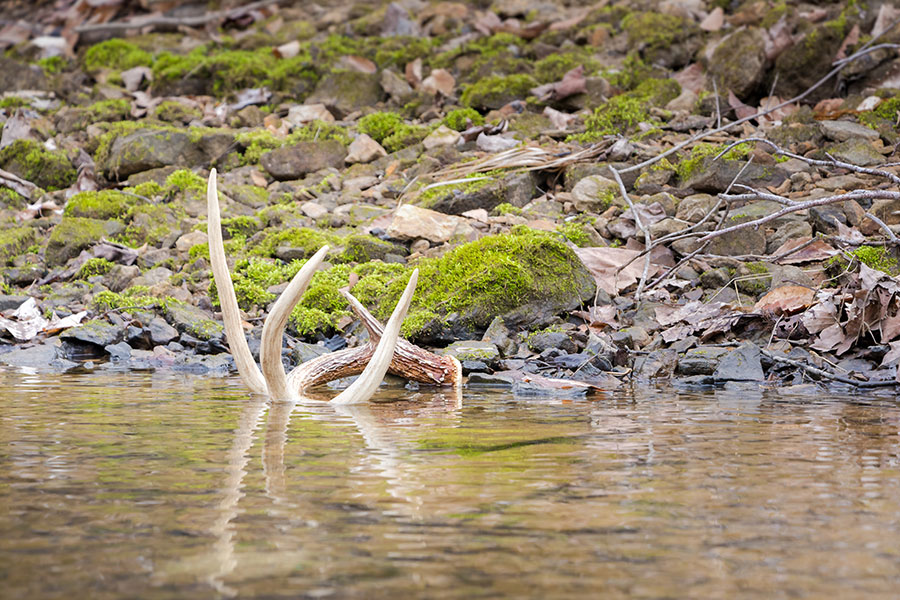
Shed antler hunting is one of the fastest growing outdoors activities. But in reality, the interest dates back to prehistory with caveman appeal. Cave paintings and ceremonial objects incorporated antlers into rituals of cultural importance as evidenced from artifacts and cave decor. That trend continues today as shed antlers have become a way to nurture hunting urges during the off-season.
Shed hunting is an ever-growing sport and there are numerous reasons why. If you don’t think it can be exciting, you’ve probably never given it a serious try. Shed hunting has become so popular that guided week-long “shed hunts” in prime areas can cost $2,500 or more with food and lodging included. Fear not; sheds can be found for free in your own hunting area or on public land if you're willing to implement a few shed hunting tips.
Before we dive into shed hunting and how to find shed antlers, let's go over some shed hunting basics.
What are shed antlers?
The interesting fact about antlers is that they are a renewable resource. Every year male members of North America’s deer family grow a new pair of antlers each spring after shedding or dropping them during the winter months. Female caribou and reindeer also follow this ritual in the far North. Even more amazing is the fact that in the peak of summer a bull elk can grow an inch of antler a day and a deer can grow a half inch of antler daily. Antlers are the fastest growing bone known to scientists.
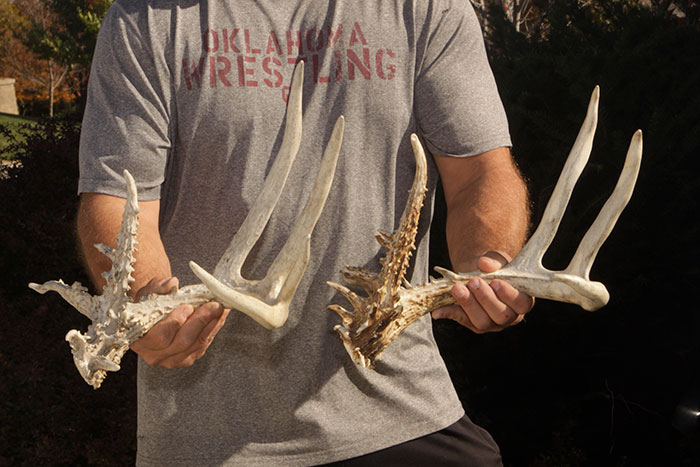
Theories abound as to why deer shed their antlers annually. Some biologists speculate deer shed antlers to blend in with females, so predators don’t target them in their rundown state during winter. Others conjecture it is just nature’s way for bucks to revitalize after the demanding breeding season. Regardless of your position on why deer shed antlers annually, antlers now have national attention. Once thought of as forest litter and left for rodent mineral rummaging, hunters now hit the woods and plains to collect these polished, pointy trophies. It’s a tradition and not one soon to be lost.
What is shed hunting?
The definition of shed hunting would be the pursuit of finding antlers that have been naturally shed by any antler-bearing mammal such as moose, caribou, elk and deer. These dropped antlers are commonly referred to as "sheds" or "shed antlers." People searching for shed antlers would be referred to as "shed hunters" or "shed antler hunters."
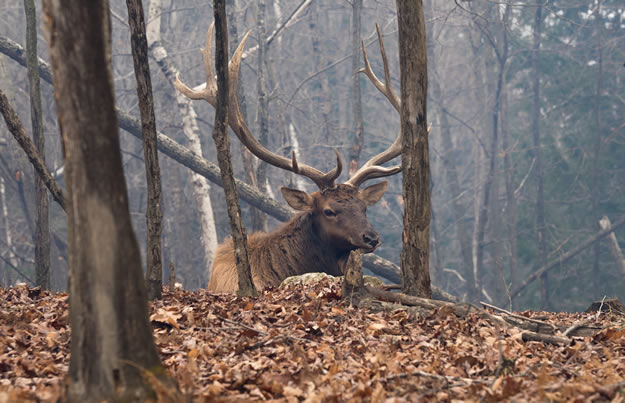
Shed hunting has grown in popularity so much that there are dogs specially trained to search out and retrieve shed antlers like a bird dog would find quail. Many dogs can learn to be good shed hunting dogs, but it is more common for hunters to with their bird or duck hunting dog. Anytime deer are shedding in your neck of the woods is a great opportunity to spend time in the field with your dog shed hunting.
The antlers typically carry a large amount of character as no two antlers are ever the exact same. There are several different ways to utilize shed antlers varying from turning them into tools and crafts or using them for antler decor.
Many people prefer to use the antlers as decoration around their houses and/or cabins.
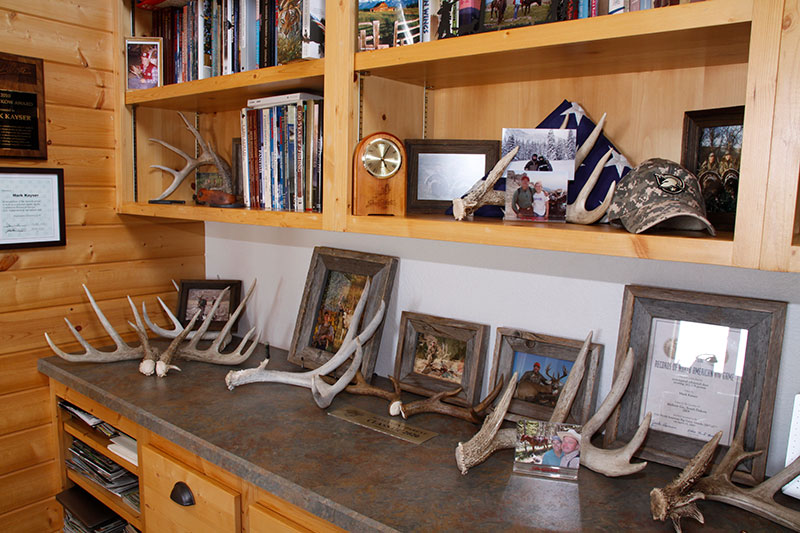
Why do people hunt for shed antlers?
People hunt shed antlers for three main reasons:
- Some people enjoy the hunt itself and the reward of admiring a fresh shed antler. They enjoy the thrill of shed hunting and being outdoors.
- Deer and big game hunters acquire valuable information about animal behavior by finding their prey's shed antlers. In some cases, hunters can track the growth of a deer by finding his shed antlers over several years. This information aids in piecing together a hunting strategy for the next season.
- Others hunt them for economic gain. They sell the shed antlers to collectors, health specialists, furniture artisans and craftsmen to create new wares.
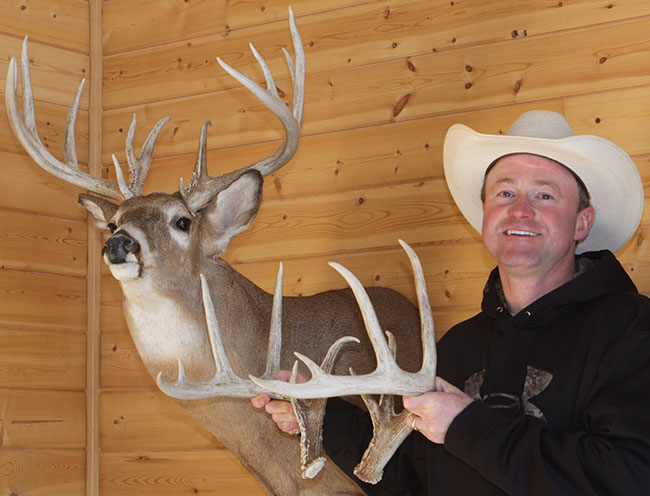
finding this buck's sheds to locate and kill the deer the
following hunting season.
When do deer shed their antlers?
When and where deer shed their antlers varies, sometimes considerably, with geographic range, environmental conditions, and age of the deer, but you’ll be more effective hitting potential hotspots.
Deer and other antler-bearing mammals typically shed their antlers around the same window of time, year after year, with respect to the specific part of the country they are in.
From numerous observations of penned whitetails that lead a life of luxury, the shedding process likely has a genetic link. Whitetail bucks living in a perfect world drop their antlers in the same short period year after year. Of course, wild whitetails seldom live in a perfect world. Drought, moisture inundation, extreme cold, excessive heat, predation, human habitat alterations and a host of other factors directly affect whitetail health and stress.
Breeding plays a major role in antler shedding with a direct link to testosterone, too.
Generally, larger, dominant bucks that do the most breeding drop their antlers earlier in the winter than younger bucks kept out of the bedroom. Researchers tested this theory a number of times by penning bucks separately from does and prohibiting breeding. The penned bucks, not expending testosterone, kept their antlers up to two months longer than their party brethren free to breed. I’ve personally backed this up with my own experience and generally stumble across larger antlers early in the winter and find numerous smaller antlers later retracing the same areas. It’s a similar story whether I’m looking for deer or elk antlers.
When is the best time to look for deer sheds?
Whitetails begin dropping antlers soon after the first of the year, although the majority drop in February and March across most of the country’s whitetail zone. As noted earlier, a severe winter or other habitat conditions could stress deer and that tension, especially if spread over weeks, could cause bucks to drop earlier. By early April most bucks will have dropped their antlers, although some have been seen carrying antlers in May on rare occasions.
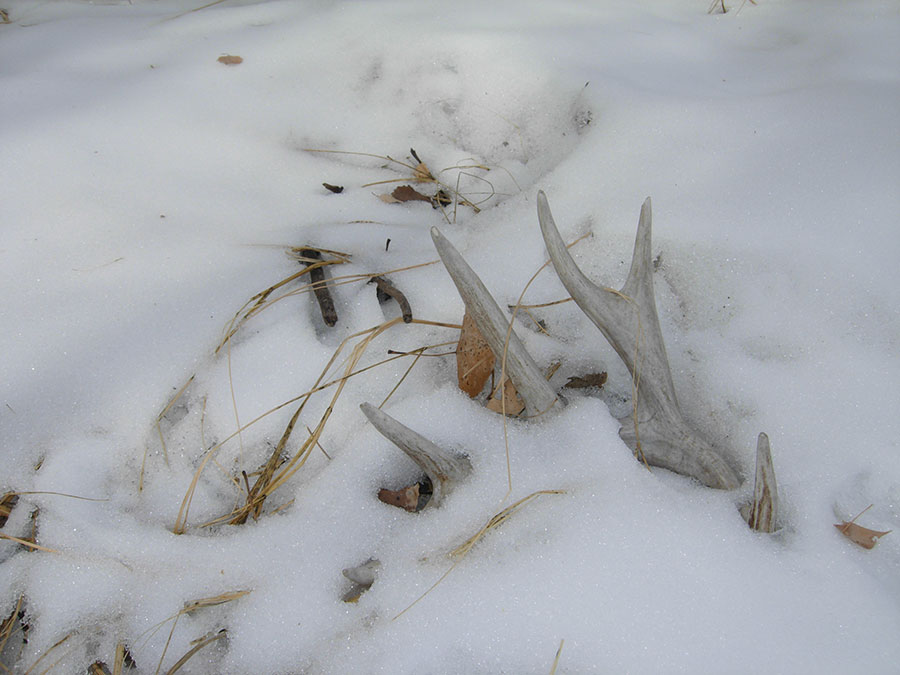
Planning shed hunting excursions in March and April coincides with the period when the majority of bucks will be antlerless. Some shed addicts prefer to begin early in hopes of finding a jackpot giant antler, but there could be consequences. Some state wildlife agencies and certain public areas now have shed antler seasons. They are trying to minimize stress on wildlife. Plus, if you go too early, you may push bucks out of their refuge. This could cause them to drop their antlers on the ground you don’t have permission to hike or even jeopardize the life of a deer already on the brink from winter stress.
Hunt shed antlers with wildlife in mind. Try to plan your trips during warmer, spring days to give animals time to recover from winter rigors. Even then, if you do encounter wildlife, leave the area or circle wide to avoid having them sense your presence.
Going too late does have three main negative points against it. First, others may find the antlers before you do. Second, rodents in many areas can gnaw an antler to a nub in a matter of weeks. Finally, spring vegetation growth can hide antlers in the new flora. Nevertheless, put wildlife first.
During your forays, you may also stumble across deer that succumbed to winter stress, predation, and even auto collisions. These make great trophies but check with your state wildlife agency on the legality of collecting antlers from a dead deer.
If you live in an area where snow persists later, you’ll have to wait a bit. However, if the snow and cold come early it tends to concentrate deer into yards, making shed hunting easier. The first big meltdown in February, after it rains, is a great time to go as previously hidden sheds are revealed.
How and Where to Find Shed Antlers
Shed antlers are found in three main areas related to wildlife habitat:
1. Bedding areas
Bedding areas are typically areas consisting of thick cover where animals will spend a large portion of their day resting and hiding from predators. As it relates to deer and big game, they tend to bed in tall grasses, brushy thickets and heavily wooded pockets of timber. When winter hits, these types of animals tend to prefer south-facing slopes to expose themselves to the longest amount of sunlight to increase their external body heat and preserve energy.
2. Feeding locations
In general, shedding begins a month or two after the rut, about the same time that bucks, depleted from the rigors of the rut, are seeking out concentrated food sources. It only makes sense then to start your search in and around feeding areas. These include agricultural fields, food plots, cutovers, orchards and oak ridges or bottoms with late-producing mast trees. In and around feeding areas, you should also look for edges with dips, depressions, heads of ravines and low spots shielded from prevailing winds - bedding areas - as these are often reliable big shed producers.
3. Travel corridors
Travel corridors are typically referred to as the trails leading away from feeding and toward dense bedding areas. While looking for sheds in these areas, look for anyplace where a deer has to jump across or over something, like a fence, which may jar antlers loose.
Through scouting, you can locate these hotspots and be on track to pick up the majority of the antlers on a property. Looking for antlers in bedding cover is best done late in the day when deer vacate known bedding cover to visit food sources. Follow trails into thick cover and constantly scan for beds and areas deer seek for refuge from winter weather. South-facing slopes and dense cover attract deer equally for winter relief.
If you own or manage your own property you could also provide supplemental feed to local deer. Keeping them close to a specific food source increases the odds they may drop antlers in easy-to-find locations. Check your state rules on feeding wildlife and create a program that not only provides the best in deer nutrition but spans the entire winter. You don’t want to create a food pattern and then suddenly end it when winter could still create stress for deer.
Hay bales, mineral supplements, and balanced deer food should all be included in your strategy. Supplemental feeding should never take the place of an overall balanced diet, but minerals like calcium and phosphorous can aid future antler growth in addition to helping does preparing to feed newborn fawns.
While targeting feeding fields, try to get high on a hill, climb into a tree stand or even use the top of your truck to gain elevation to scan down. Glass the field using an 8- or 10-power binocular looking for antler tips or shiny spots of white. Binoculars also come in handy while walking the woods to inspect "suspect" antlers from afar without trekking over to investigate. In addition to food plots and harvested fields, don’t overlook hayfields and haystacks stored for winter livestock feeding.
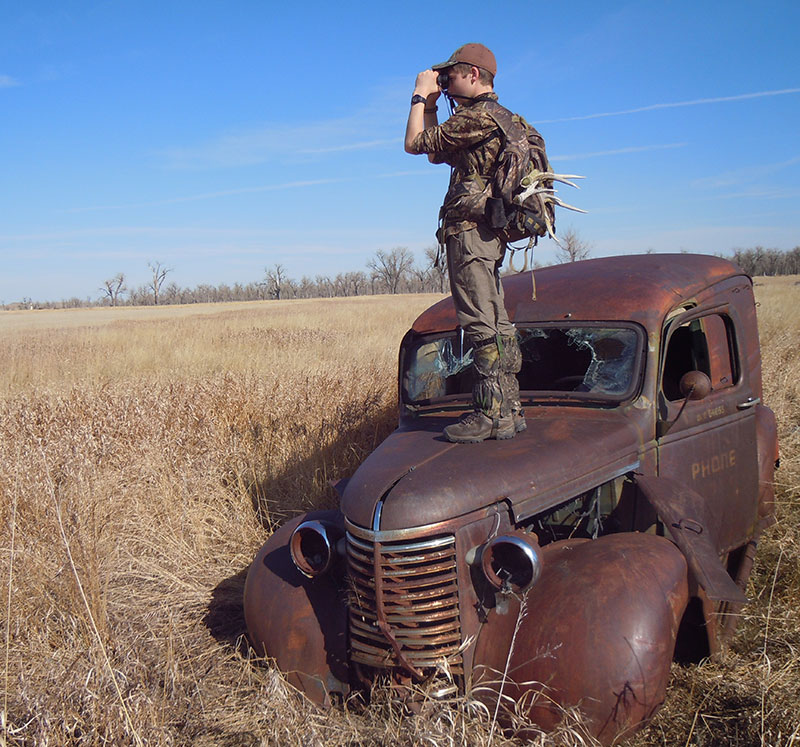
For those of you with ATVs, you can add shed antler hunting to the list of reasons justifying your purchase. If landowners allow, your ATV can motor you across harvested fields to cover more areas at a quicker pace. If you use a grid search system, you won’t miss many antlers especially in large fields, east or west. A hunting app such as ScoutLook Weather allows you to grid an area and add notes to Google Earth images when you do find a hotspot.
Advanced Shed Antler Hunting
Do you want to find even more shed antlers than the typical dozen most gather during the spring? Outfit yourself with the best in boots, clothing and a hunting-style backpack. Then go deep. Even though the majority of antlers are found in the three aforementioned hotspots, deer wander, roam and are even pushed to other locations. Whether chased by a coyote or simply looking for a better sanctuary to ride out a storm, deer oftentimes go out of bounds. Follow trails through briar thickets, willow stands and into cattail swamps.
Many shed hunters avoid pushing into these horrid environments, especially when the vegetation bites back. Nevertheless, these areas oftentimes give up the best antlers because savvy, mature bucks retire to such locations to avoid human contact. Mature bucks never follow the rules of the pack.
If you do leave the beaten path swing by any fences and chasms you run across. As the days near closer to a buck losing his antlers, they loosen up. This occurs quickly, but any jarring can jettison them on the spot. Jumping fences, spanning gullies and bounding over any obstacle could jolt an antler loose. This is especially true for western shed hunting for mule deer or elk antlers as they traverse rocky, mountainous terrain.
Shed hunters should avoid the temptation to use shed traps. There are shed hunters so obsessed with finding sheds that they will resort to almost anything. In extreme cases, they build antler traps and leave them on their property in hopes a buck will pull his antlers off in the trap. Using antler traps is not a good practice, as bucks that are not entirely ready to lose their antlers will pull their antlers off along with a piece of the skull.
Does Mr. Ed occupy space at your abode? Horses can also be a huge help and not only in the obvious transportation category. Using a horse saves you miles on your legs and can help add more miles to your day without exhaustion. Better yet, a good horse elevates you so you can look down into grass and brush for a birds-eye perspective. You can lash antlers to the saddle as well to avoid a backpacking backache at the end of the day.
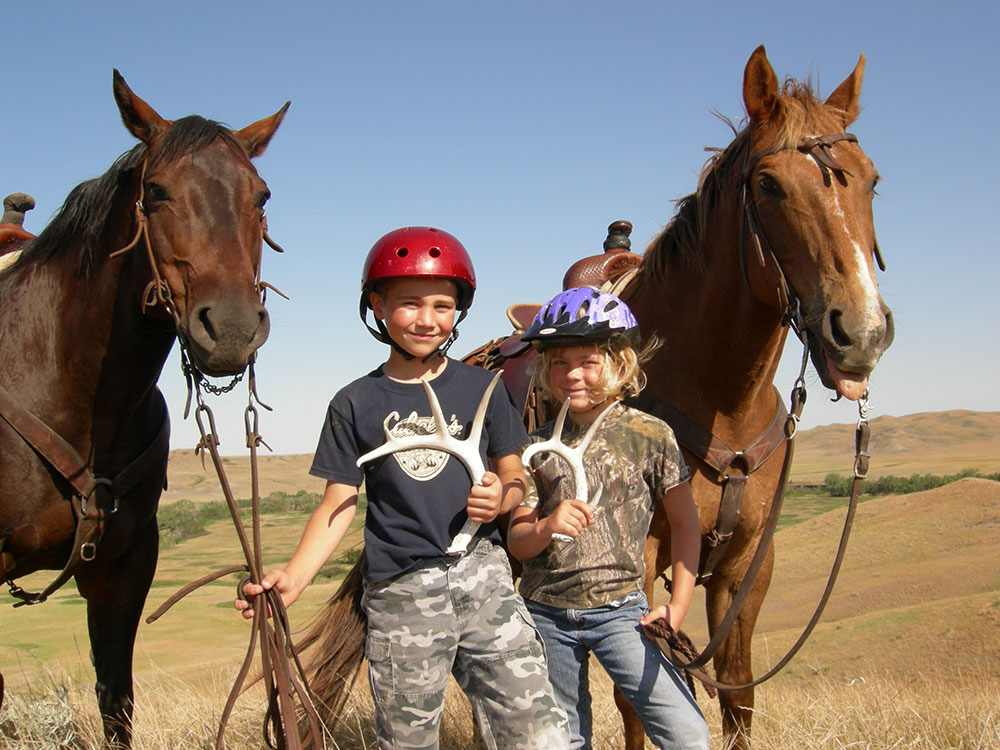
Shed Hunting Dogs
Dog is man’s best friend, but your dog could also be your next shed antler hunting partner. Dogs already have an instinctive nature to sniff out interesting objects like bones. Since antler is bone using a dog to find additional shed antlers just makes sense. Your dog may already be up to the task, but keep these aspects in mind. A small lap dog may not have the stamina to keep up during a daylong hike. The same goes for big breeds, especially if Oprah has been eyeing your dog for a Weight Watchers’ ad campaign. Even though you can teach old dog new tricks, sometimes stubbornness trumps trying to please a human master during a dog’s AARP years.
The best results for any shed hunting dog come from planning and specific training that begins at an early age. Begin by researching the best dog breeds for a shed antler hunting dog.
I used to bring my dog just for companionship but he soon developed a knack for finding sheds. Dogs can cover far more ground, are a lot more willing to go into those dense tangles that you avoid, and they have a much greater sense of smell (and yes, sheds do have an odor). Some dogs have a natural instinct for it while others can be trained. In fact, training dogs to hunt for sheds has become quite popular.
Best Shed Hunting Dogs
Popular hunting breeds such as Labradors and golden retrievers have noses, enthusiasm and endurance to support your shed antler hunting goals. These breeds lead the pack today for shed hunting duties, but hunting breeds such as German shorthairs, Weimaraners, English pointers and others can easily transition into shed antler hunting with targeted training.
Some tracking dogs also pick up the activity due to their excellent senses. These breeds include beagles and even bloodhounds. Curs, well known for their coyote and hog expertise, have also been trained to find shed antlers. Consider those breeds, but don’t get frustrated if you have another breed in mind. With the right training you can turn any canine athlete into a shed hunting partner.
How to Train a Dog to Shed Hunt
According to experts the training of your dog should begin the moment you bring it home. That usually is between eight and 12 weeks of age for a puppy. Don’t add too much to any training regimen. Work on one command during each session. Adding too much can confuse a young puppy. A reward system helps incentivize a puppy’s desire to please you and perform better during each session. Simple treats or hot dog pieces, plus your excitement helps excel learning.
When you finally begin search and retrieve training use small antlers. They are easy for your puppy to carry and won’t poke them which could cause a puppy to eye further antlers suspiciously. Some trainers add manufactured antler scent. You can also leave your training antler stash outside to get rinsed by rain showers. It will cleanse your scent from the antlers and returns them to a natural state.
Throughout your training never allow a puppy to chew on an antler as the reward. This could lead to a bad habit and chaos if you have any decorative, landscape antlers lying outside of your house.
If you don’t have the time or inclination to train a dog for shed antler hunting you can always call upon a professional trainer for help. Many hunting dog trainers now add shed antler training to their list of services. A quick online search can unveil any qualified trainers near your zip code.
My hiking partner and coyote dog, Sage, also doubles as a shed antler hunting dog when she feels the urge. As a pup I included shed antler hunting training into her role as an all-around outdoor dog. She enjoys engaging with coyotes more than shed antler hunting, but every time we hike I’m amazed at the antlers she digs up buried in inches of forest duff. She doesn’t embrace retrieving, but I keep a close eye on her as we hike. Whether it’s an old antler or a lion-killed deer, she’ll zero in on it, sniff it and then continue on her way. I never bypass a location when I watch her stop to investigate.
Shed antler hunting continues to attract new participants. Including your dog into the sport just makes sense. Dogs love snooping for bones and the help could increase your spring shed antler bounty.
Booking a Shed Hunt
If your addiction includes looking for giant antlers or amassing hundreds you may even want to consider an outfitted shed antler hunt. Numerous outfitters now offer spring shed antler hunting trips including accommodations and access to properties holding bounties of antlers. Entrepreneurs may charge a daily fee of $250 or more to guide clients to shed-rich areas.
With practice comes proficiency. Over time you’ll develop a search image and a greater ability to pick out the general shape and color of an antler, even from a distance. This allows you scan larger areas in less time. Remember, just as the best deer hunters look not for a deer but for parts of a deer, the most successful shed hunters should look for tines, beams and the general shapes and colors of an antler. You may only see the tip of a tine poking through the snow or out of the mud.
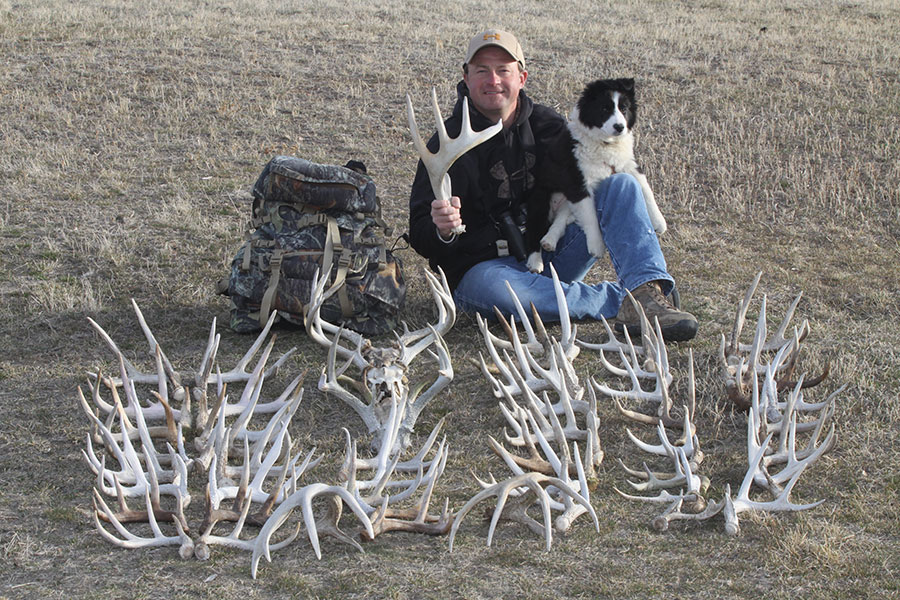
Evolution is great, but sometimes you have to return to your caveman roots. Shed antler hunting is a great way to embrace your past.














